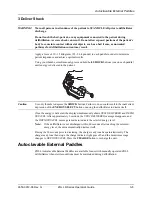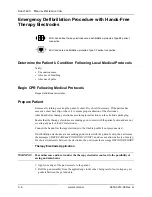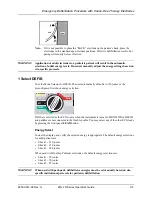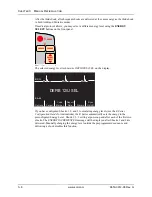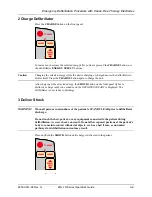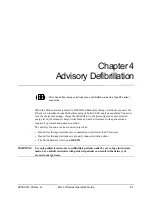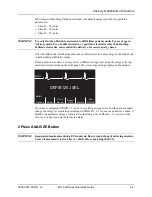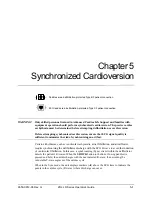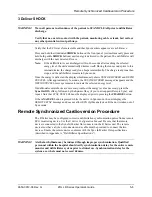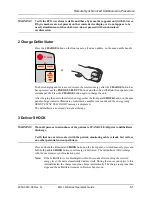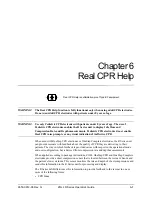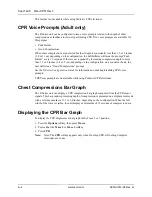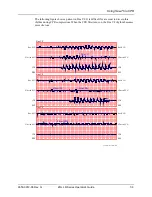
9650-0912-06 Rev. G
ZOLL R Series Operator’s Guide
5–1
Chapter 5
Synchronized Cardioversion
WARNING!
Only skilled personnel trained in Advanced Cardiac Life Support and familiar with
equipment operation should perform synchronized cardioversion. The precise cardiac
arrhythmia must be determined before attempting defibrillation or cardioversion.
Before attempting synchronized cardioversion, ensure that ECG signal quality is
sufficient to minimize the risk of synchronizing on artifact.
Certain arrhythmias, such as ventricular tachycardia, atrial fibrillation, and atrial flutter,
require synchronizing the defibrillator discharge with the ECG R-wave to avoid the induction
of ventricular fibrillation.
In this case, a synchronizing (Sync) circuit within the defibrillator
detects the patient’s R-waves. When the
SHOCK
button (or buttons, if using paddles) is
pressed and held, the unit discharges with the next detected R-wave, thus avoiding the
vulnerable T-wave segment of the cardiac cycle.
When in the Sync mode, the unit displays markers (
) above the ECG trace to indicate the
points in the cardiac cycle (R waves) where discharge can occur.
Paddles are a defibrillation-protected Type BF patient connection.
ECG leads are a defibrillation-protected Type CF patient connection.

